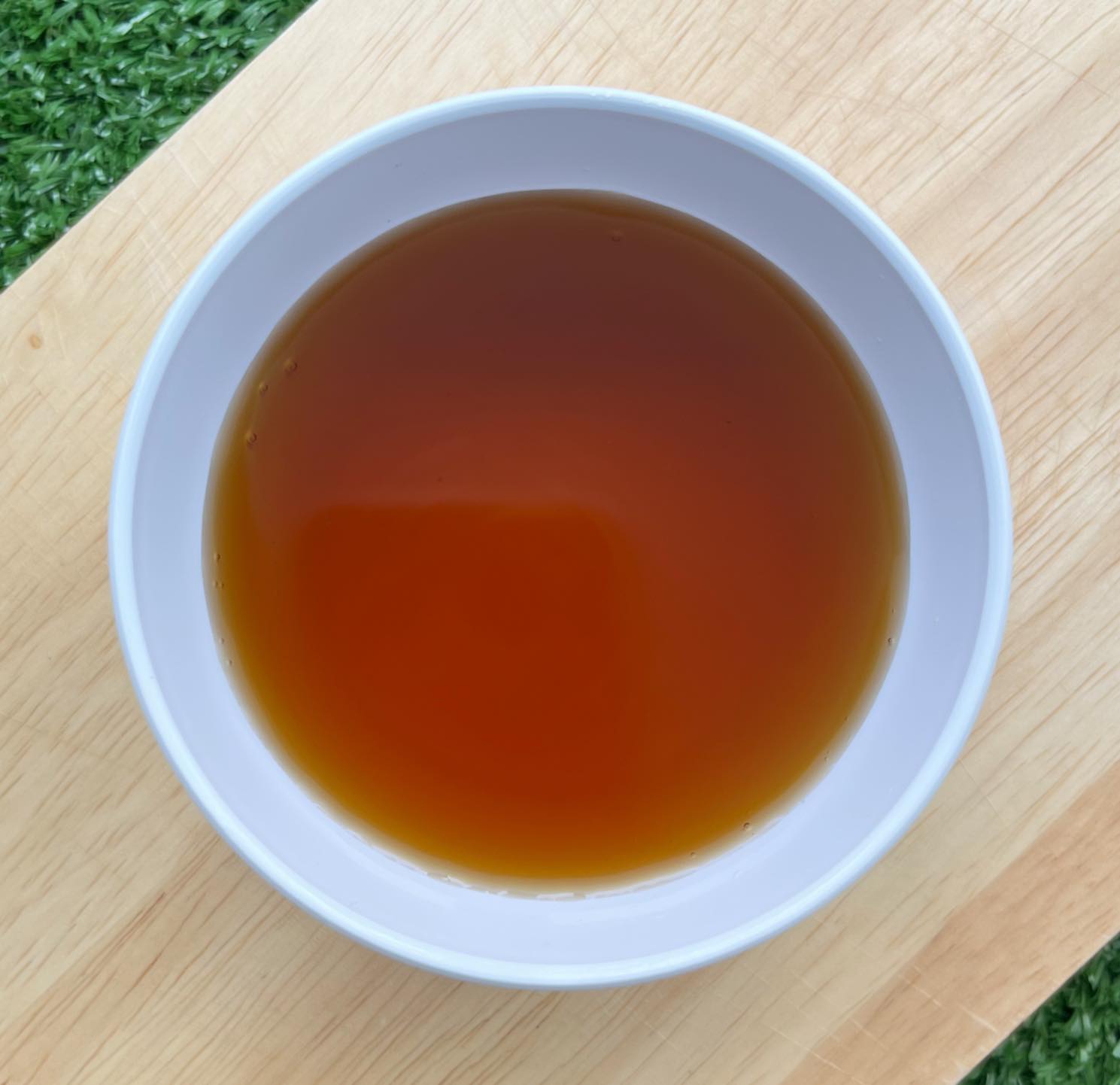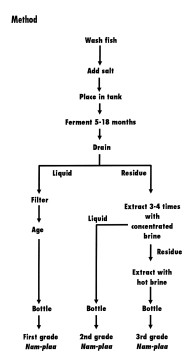Nam-plaa
- Name (Thai)
- น้ำปลา
- Name (English)
- Fish sauce
- Local name
- Nam-plaa-dee Nam-plaa-sod
- Fish normally used
-
Corica argentius (Siu-kaew)
Corica soborna
Stolephorus indicus
Stolephorus commersonii (Sai-ton)
Trissocles setirostris (Ngaa)
Clupeoides sp. (Ka-tak)
Rasbora sp. (Siu) Stolephorus sp. (Maeo) Rastrelliger brachysma (Too) Crossocheilus sp., Cirrhinus sp., Labiobarbus sp., Osteochilus sp. (Soi)
- Product
- Fishery
- Ingredients
- Various fresh water fish, brackish water and sea water fish, and salt.
- Fermentation
- 18 months.
- Storage life
- 2 years.
- Microorganisms
-
Bacillus sp.
Reference The traditional fermented foods of Thailand ISBN 9679932249 Year 1995 Micrococcus sp.Reference The traditional fermented foods of Thailand ISBN 9679932249 Year 1995 Sarcina sp.Reference The traditional fermented foods of Thailand ISBN 9679932249 Year 1995 Bacillus piscicola sp. nov.Reference Bacillus piscicola sp. nov., isolated from Thai fish sauce (Nam-pla) DOI 10.1099/ijsem.0.000851 Year 2016 Halobacterium salinariumReference Isolation and Characterization of Enterocin W, a Novel Two-Peptide Lantibiotic Produced by Enterococcus faecalis NKR-4-1 DOI 10.1128/AEM.06497-11 Year 2012 Lactoplantibacillus plantarumReference Bacteriocinogenic lactic acid bacteria from Thai fermented foods: Potential food applications DOI 10.1016/j.fbio.2023.102385 Year 2023 Pediococcus sp.Reference The traditional fermented foods of Thailand ISBN 9679932249 Year 1995 Staphylococcus sp.Reference The traditional fermented foods of Thailand ISBN 9679932249 Year 1995 Tetragenococcus halophilusReference Characterization and Identification of Tetragenococcus halophilus and Tetragenococcus muriaticus Strains from Fish Sauce (Nam-pla) DOI 10.4109/jslab1997.13.46 Year 2002 Tetragenococcus muriaticusReference Characterization and Identification of Tetragenococcus halophilus and Tetragenococcus muriaticus Strains from Fish Sauce (Nam-pla) DOI 10.4109/jslab1997.13.46 Year 2002 - Properties
- Clear, yellow or brownish yellow colour, salty and fishy aroma.
- Method
- 1. Wash fish and put in wooden or cement tanks with salt. The ratio of fish to salt is from 5:1 to 1:1. Place a weight on the top to keep the fish below the brine all the time. Leave the fish 5 to 18 months. A clear liquid forms, which is skimmed off the top or drained through a spigot near the bottom of the container. Filter the liquid and expose to the sun until ripe. The sauce is stored in bottles or earthen ware jars. 2. After the first liquid has been drawn off, the residue is extracted up to 3-4 times with concentrated brine to make a lower grade product. The extracts are mixed with different amounts of the first genuine liquid to produce different grades of sauce.
- Production
- On an industrial scale; exported to ASEAN countries, USA and Europe.
- Consumption
- In every Thai dish Nam-plaa is the main flavor as it is added in cooking or at the table. It is also used to make a dipping sauce.


